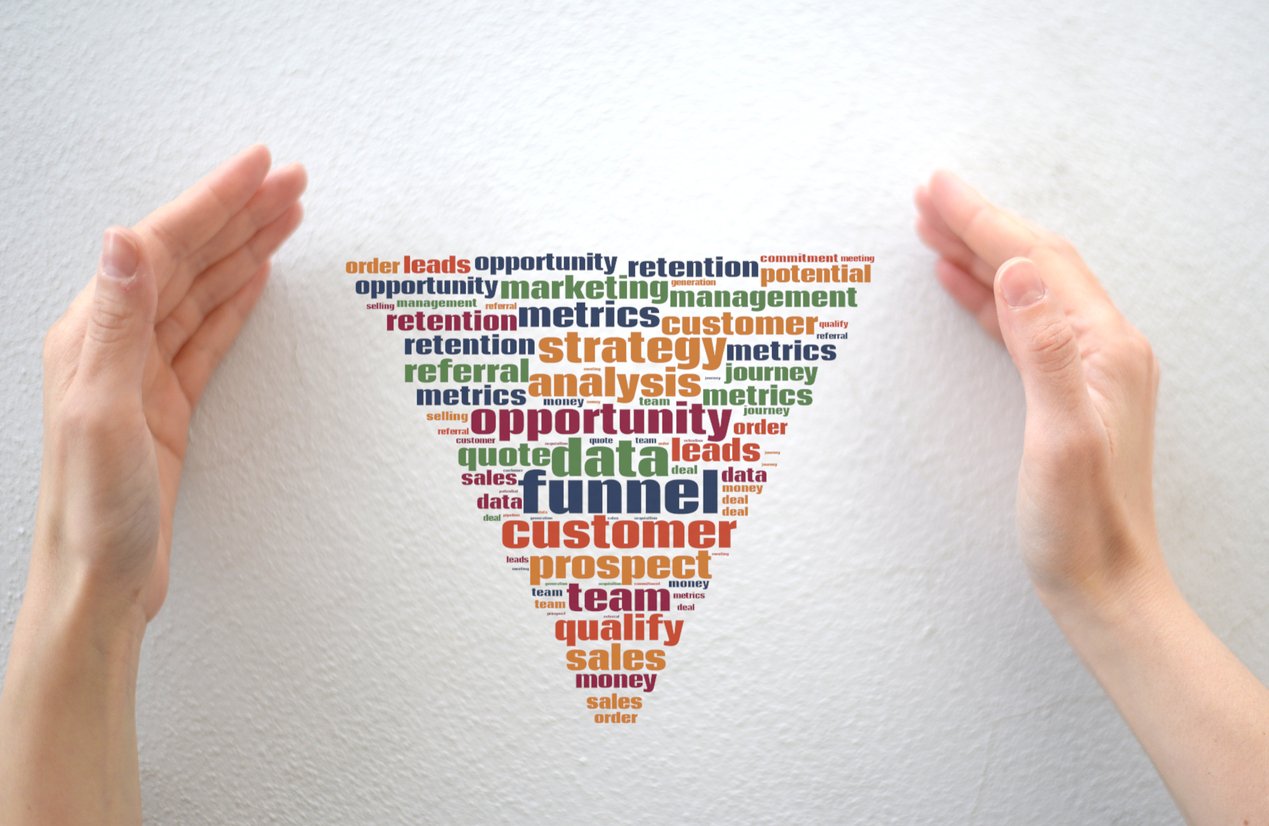
Top Key Performance Indicators for Sales: 10+ KPIs to Track
 Updated on
Updated on
By Ringy
Table of Contents
Table of Contents
Sales success isn't just about closing deals—it's about tracking the right numbers to measure, optimize, and scale your performance.
But with so many sales metrics available, how do you know which ones truly matter?
That's where Key Performance Indicators (KPIs) for sales can help you out.
If you've ever wondered "What are the 5 key performance indicators in sales?", or "How do I measure my sales team's financial performance?", you're in the right place.
This guide will break down the most critical sales performance indicators, why they matter, and how you can use tools like Ringy to track and improve them effortlessly.
What Are 5 Key Performance Indicators in Sales?

Key performance indicators for sales provide a snapshot of your sales performance, from overall revenue growth to the efficiency of your customer acquisition efforts. Before we discuss the details, let's summarize the five essential sales performance KPIs that every team should track.
|
Sales Key Performance Indicators |
Why It Matters |
|
Revenue Growth |
Tracks overall sales performance trends |
|
Conversion Rate |
Measures how effectively leads turn into customers |
|
Sale Cycle Length |
Helps optimize the time needed to close deals |
|
Customer Acquisition Cost (COC) |
Evaluates cost efficiency in gaining new customers |
|
Customer Lifetime Value (CLV) |
Predicts long-term revenue from each customer |
Monitoring and analyzing these key performance indicators for sales gives you valuable insights into your sales process, identifies areas for improvement, and ultimately drives revenue growth.
Let's dive deeper into each of these key performance indicator sales KPIs and explore how they contribute to sales success.
Revenue Growth
Revenue growth is the ultimate indicator of business success. If your revenue isn't increasing, something's wrong.
- How to Calculate: Revenue Growth = (Current Period Revenue-Previous Period Revenue)/ Previous Period Revenuex100
- Why It's Important: Shows whether your sales efforts are paying off.
- How to Improve It: Optimize your sales strategies, refine your customer targeting, and use automation tools like Ringy to boost efficiency.
There you have it!
Revenue growth: it's the big kahuna, the main event, the... you get the picture. Keep a close eye on this metric, and if it's not heading north, it's time to switch things up and get those sales soaring.
Conversion Rate
Your conversion rate is a key metric for evaluating the effectiveness of your sales and marketing efforts. It measures the percentage of leads that convert into paying customers, providing valuable insights into the efficiency of your sales funnel.
Here's the what, why, and how of these KPIs to measure sales performance:
- Formula: Conversion Rate = (Number of Sales/Number of Leads) x 100
- Why It's Important: High conversion rates = efficient sales process.
- How to Improve It: Personalize outreach, follow up consistently, and use CRM tools like Ringy for data-driven insights.
See? Conversion rates aren't just numbers on a screen; they're a direct reflection of how well you connect with your potential customers.
Sales Cycle Length
These key performance indicators for sales measure the average time it takes for a lead to move through your sales pipeline and become a paying customer.
Let's learn more:
- Formula: Sales Cycle Length = Total Time Taken to Close Deal / Number of Closed Deals
- Why It's Important: Shorter sales cycles mean quicker revenue.
- How to Improve It: Automate follow-ups and streamline lead nurturing with Ringy's marketing automation features.
By automating and streamlining your lead nurturing process, you can shorten your sales cycle and watch the revenue roll in faster than ever.
Customer Acquisition Cost (CAC)
So, you're probably wondering, "How much does it really cost to snag a new customer?" That's where your Customer Acquisition Cost (CAC) comes into play.
Let's explore more:
- Formula: CAC = Total Sales and Marketing Expenses / Number of New Customers Acquired
- Why It's Important: Helps you balance growth with profitability.
- How to Improve It: Optimize your marketing spend and increase lead conversion efficiency.
By identifying areas where you can reduce costs and increase conversions, you can acquire customers more efficiently, paving the way for sustainable business growth.
Don't forget, a lower CAC means you're getting more bang for your buck when it comes to acquiring new customers.
Customer Lifetime Value (CLV)
CLV estimates how much revenue a customer generates over their entire relationship with your business.
Here's everything you need to know:
- Formula: CLV = Average Purchase Value x Purchase Frequency x Customer Lifespan
- Why It's Important: Helps predict long-term revenue.
- How to Improve It: Boost customer retention through superior service and automated follow-ups with Ringy.
Focusing on customer retention and maximizing the value they bring throughout their relationship with your business, you can unlock long-term revenue potential and ensure sustainable business growth.
Remember, a high CLV signifies not only satisfied customers but also a thriving and profitable business.
What KPIs Would You Consider Using to Evaluate Sales Financial Performance?

Understanding financial key performance indicators for sales is essential for maintaining a sustainable and profitable sales strategy. Tracking these sales key performance indicators examples provide you with insights into profitability, customer satisfaction, and overall financial health.
Below is a breakdown of the most critical financial KPIs every sales team should monitor:
|
Financial KPI |
What It Measures |
|
Gross Margin |
Profitability per sale |
|
Net Promoter Score |
Customer satisfaction's impact on sales |
|
Return of Sale (ROS) |
How efficiently sales drive profit |
|
Churn Rate |
Revenue lost from customer attrition |
Monitoring these KPIs allows you to make informed decisions, improve your sales strategy, and drive long-term success. With our sales software CRM, you can automate tracking, analyze trends, and take proactive steps to enhance your financial performance.
Gross Margin
Gross margin tells you how much profit you make after deducting costs from revenue, which directly reflects your company's financial health.
Let's learn more:
- Formula: Gross Margin = (Revenue - Cost of Goods Sold)/ Revenue x 100
- Why It's Important: A higher gross margin means your business is generating more profit per sale.
- How to Improve It: Increase pricing, negotiate better supplier rates, optimize production costs, and improve sales efficiency.
Gross margin isn't just about crunching numbers; it's about understanding how each sale contributes to your bottom line.
Net Promoter Score (NPS)
Net Promoter Score (NPS) gauges customer loyalty and satisfaction by asking how likely they are to recommend your company to others. This crucial metric can be a strong indicator of customer relationships and potential referrals.
Here's the gist of it:
- Formula: NPS = %Promoters - %Dectractors
- Why It's Important: A high NPS correlates with strong customer relationships and increased referrals.
- How to Improve It: Provide exceptional service, personalize interactions, address pain points proactively, and use a CRM for better customer engagement.
By prioritizing exceptional service, personalized interactions, and proactive issue resolution, you can cultivate strong customer relationships and boost your NPS. Implementing a robust CRM system like Ringy can further enhance customer engagement and satisfaction, leading to improved loyalty and a higher NPS.
Return on Sales (ROS)
ROS evaluates how effectively sales generate profit, showing the efficiency of your sales team.
You already know what's next.
- Formula: ROS = (Operating Profit/Sales Revenue) x 100
- Why It's Important: Higher ROS means your sales team is converting revenue into actual profit more efficiently.
- How to Improve It: Increase upselling and cross-selling, refine pricing strategies, enhance sales efficiency, and leverage Ringy's automation features to streamline operations.
By strategically implementing these tactics and utilizing tools like Ringy to enhance sales operations, you can optimize your Return on Sales and drive sustainable profitability for your business.
Churn Rate
Churn rate measures customer retention by tracking the percentage of lost customers over time.
Here's the important stuff:
- Formula: (Number of Customers Lost / Total Number of Customers at the Start of Period) x 100
- Why It's Important: A high churn rate indicates customer dissatisfaction and can lead to decreased revenue and business instability.
- How to Improve It: Implementing customer retention strategies, loyalty programs, personalized support, and proactive engagement using Ringy's CRM automation can help reduce churn and improve customer satisfaction.
Remember, retaining existing customers is often more cost-effective than acquiring new ones, making churn rate a crucial KPI for sales teams to monitor and optimize.
B2B Sales Performance Metrics

Alright, let's talk about B2B sales performance metrics—the numbers that actually tell you whether your sales efforts are paying off. Unlike general sales KPIs, these are laser-focused on tracking how well you're engaging and converting business clients.
Before we dive into the details, here's a quick summary so you know what's coming:
|
Metric |
Why It Matters |
How to Improve |
|
Lead-to-Opportunity Ratio |
Identifies how many leads turn into real opportunities |
Focus on high-quality lead generation |
|
Average Sales Demo Conversion Rate |
Measures effectiveness of product demos |
Use engaging demo tools and tailor presentations |
|
Account-Based Selling KPIs |
Tracks revenue per high-value enterprise account |
Personalize outreach and nurture key accounts |
|
Upsell & Cross-sell Rates |
Maximizes revenue from existing clients |
Offer strategic add-ons and customized solutions |
Now, let's break these down and see how they impact your sales performance.
Lead-to-Opportunity Ratio
Every lead is bespoke. This metric helps you figure out how many of your leads actually turn into legit sales opportunities.
If your ratio is low, it could mean you're spending too much time on leads that were never a good fit in the first place. Instead of casting a wide net and hoping for the best, it's smarter to focus on high-quality leads that have a real chance of converting.
One way to improve this is by prioritizing lead quality over quantity—target decision-makers who actually have the authority (and budget) to say yes. Using lead scoring can also help you rank prospects based on their likelihood to convert, so you're not wasting time on leads that aren't ready to buy.
And don't forget about alignment between your marketing and sales teams—when both are on the same page about what makes a great lead, you'll naturally attract and convert better prospects.
Average Sales Demo Conversion Rate
If you're selling B2B, chances are your product demos play a huge role in closing deals. But here's the big question—are your demos actually converting prospects into customers, or are they walking away unimpressed?
Your average sales demo conversion rate tells you exactly that.
A low conversion rate could mean your demos aren't engaging enough, aren't addressing key pain points, or simply aren't being followed up on properly.
To improve this, start by investing in an interactive sales demo tool—something that makes the experience engaging and memorable.
Next, make sure your demos are personalized to each prospect's needs. A generic, one-size-fits-all presentation won't cut it; tailor your pitch to show exactly how your solution solves their specific problems.
Account-Based Selling KPIs
B2B sales often involve big fish—those high-value enterprise clients that can bring in serious revenue.
But landing these accounts is just the beginning.
To truly maximize their potential, you need to track account-based selling key performance indicators for sales, such as revenue per account, engagement rates, and customer lifetime value.
One of the best ways to improve these numbers is by assigning dedicated account managers to your key clients. A strong, ongoing relationship with a knowledgeable point of contact can make all the difference in customer retention and expansion.
Upsell & Cross-Sell Rates
New customers are great, but your existing clients are often your best revenue source. This metric tracks how effectively you're getting current customers to upgrade or purchase additional services.
Here's how you can improve these rates:
- Offer personalized upsell recommendations based on past purchases.
- Bundle complementary products or services.
- Train your sales team to identify upsell and cross-sell opportunities naturally.
The best B2B sales teams don't just chase leads—they track the right metrics to focus on quality opportunities, maximize enterprise accounts, and increase revenue from existing clients.
Start optimizing these key performance indicators for sales, and you'll see the results in your bottom line.
How to Track and Improve Sales KPIs

Tracking your sales KPIs for email marketing, for example, isn't just about collecting numbers—it's about using those insights to actually improve performance. The right tools and strategies make it easy to monitor what's working, fix what's not, and boost efficiency along the way.
Here's a quick summary table to provide more clarity:
|
Method |
Why It Matters |
|
CRM Tools, Call Center Analytics Software, and Reporting Dashboards |
Centralize data, track trends, and gain real-time insights |
|
Sales Demo Tools |
Measure engagement and demo effectiveness |
|
Automation |
Streamline KPI tracking and eliminate manual reporting |
Whether you're using CRM tools, sales demo tracking, or automation, the goal is the same—turning raw data into actionable insights.
Now, let's briefly dive into each method.
Use CRM Tools and Analytics Dashboards
A good CRM isn't just a contact list—it's your command center for tracking leads, conversions, and revenue trends. Pair it with analytics and sales dashboard KPIs to visualize key performance indicators for sales and make data-driven decisions faster.
Leverage Sales Demo Tools for Better Insights
Your sales demos aren't just presentations—they're data goldmines.
Using demo tools, you can track engagement, measure conversion rates, and refine your approach based on real-time feedback.
Automate for Efficiency
Manually tracking KPIs?
That's a productivity killer.
Automating KPI tracking with CRM integrations and AI-powered tools keeps your data accurate, saves time, and helps your sales team focus on closing deals instead of crunching numbers.
Track Key Performance Indicators for Sales the Right Way

The key takeaway of this article?
Sales success isn't about working harder—it's about working smarter.
With the right tools in place, like CRM software, sales demo tracking, and automation, you can streamline key performance indicators for sales tracking and make data-driven decisions that move the needle.
If you're serious about optimizing your sales performance, Ringy has everything you need to track, analyze, and improve your sales KPIs effortlessly.
Request a demo today and see how Ringy can help you close more deals, faster.

Skyrocket your sales with the CRM that does it all.
Calling? Check. SMS? Check. Automation and AI? Check. Effortlessly keep in touch with your customers and boost your revenue without limits.

Take your sales to new heights with Ringy.
Sales in a slump? Ringy gives you the tools and flexibility you need to capture leads, engage with them, and turn them into customers.
Subscribe to Our Blog
Enter your email to get the latest updates sent straight to your inbox!
Categories
Related Articles




































































































